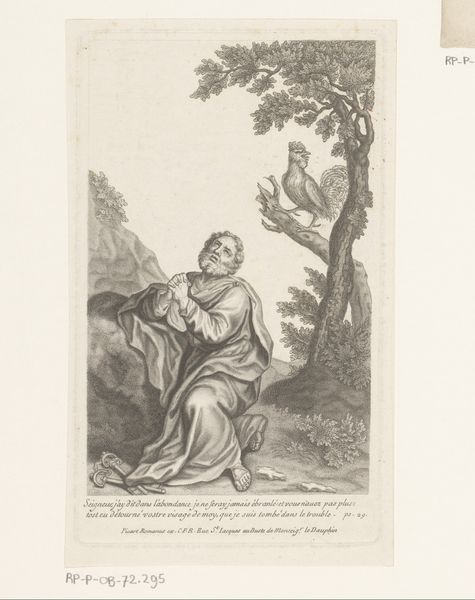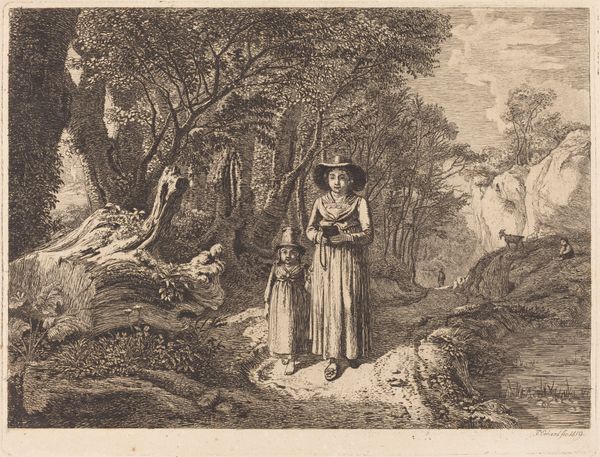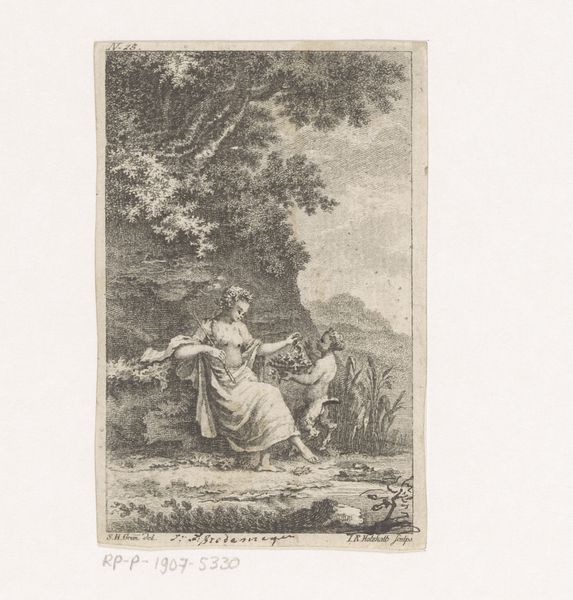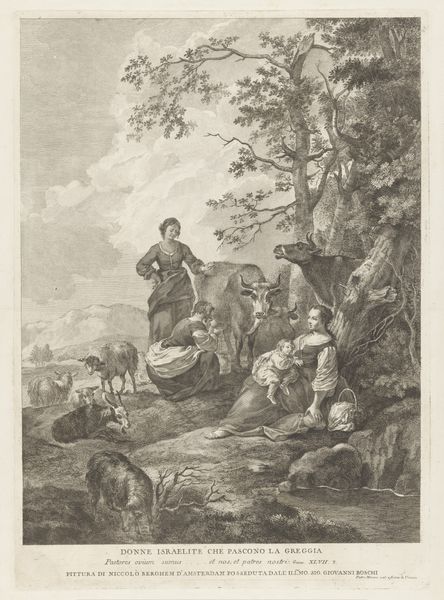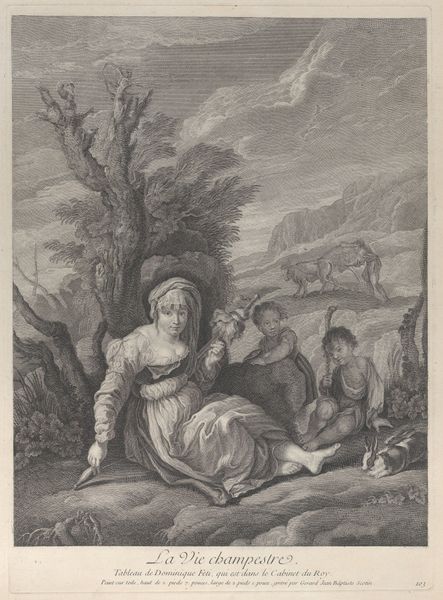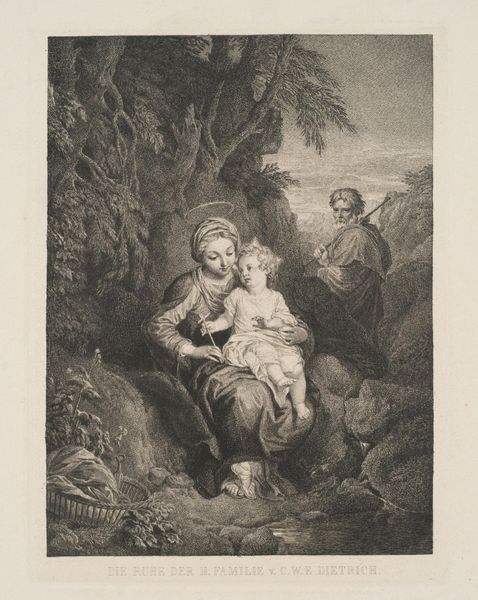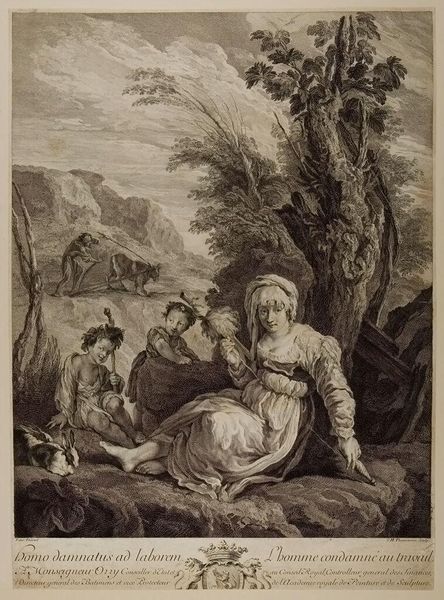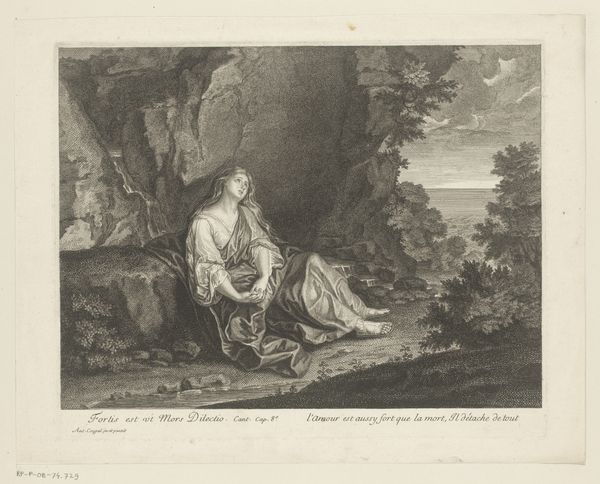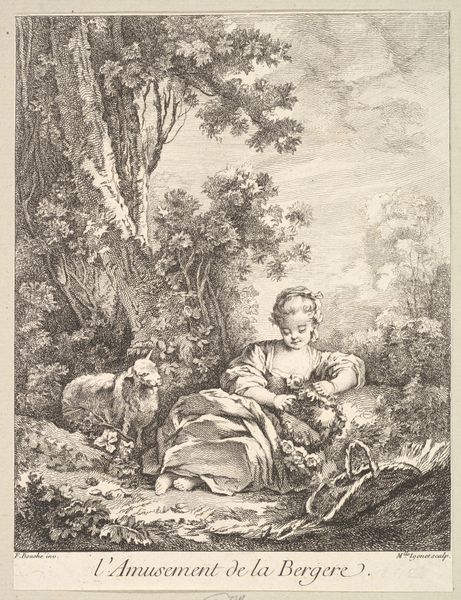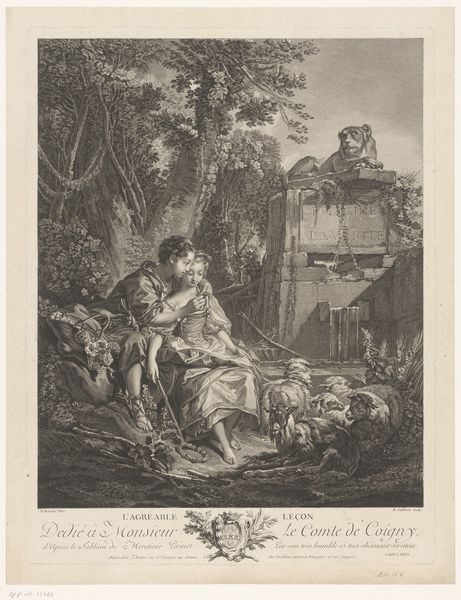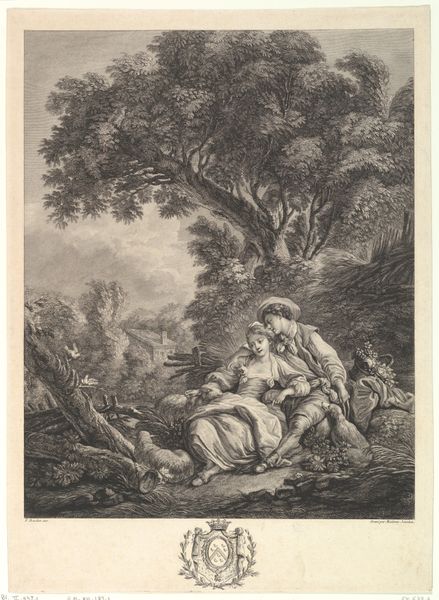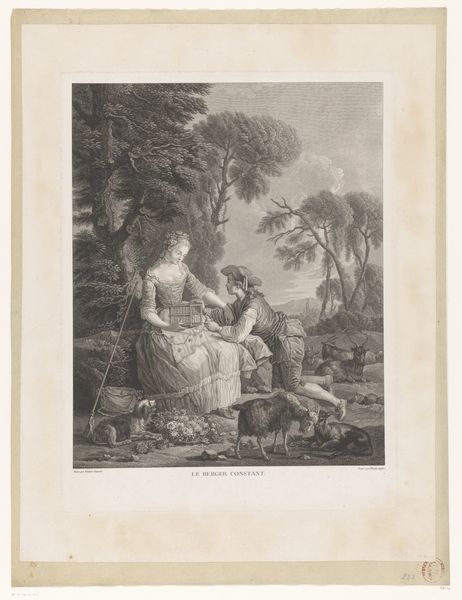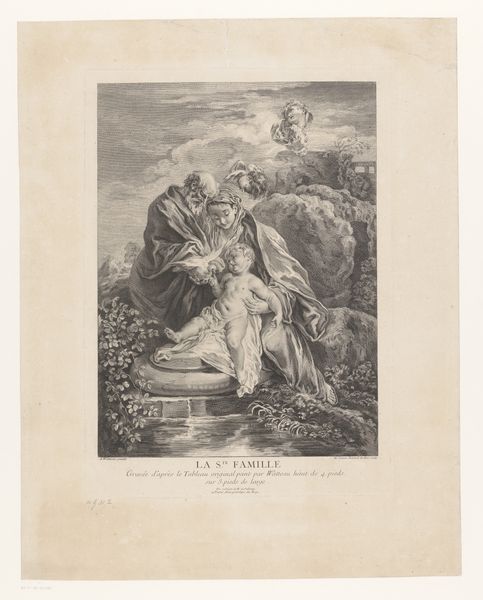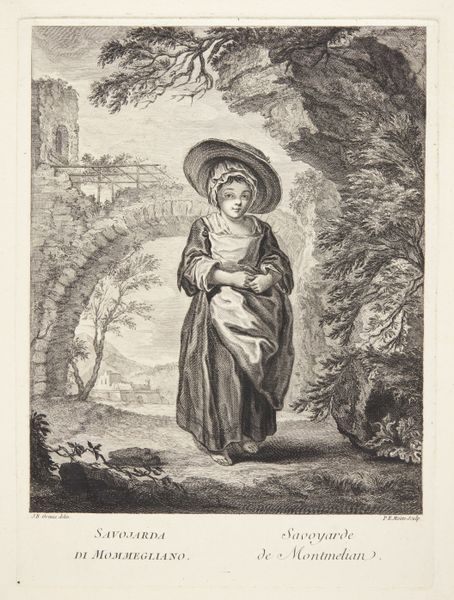
Dimensions: sheet: 15 1/8 x 10 13/16 in. (38.4 x 27.5 cm)
Copyright: Public Domain
Curator: Before us hangs "Shepherd Girl of the Alps," a drawing from around 1756-1815 attributed to Philippe Trière, rendered as an engraving. It's currently held here at the Metropolitan Museum of Art. Editor: My immediate impression is one of deliberate artifice. It presents a romantic vision of rural life, far removed from the actual labor of shepherding. Curator: Precisely. The girl's clothing is too clean, her posture too composed. She's adorned with flowers, almost a decorative object herself within this landscape. What of the sheep themselves? They serve more as props than livestock. She holds a sprig of what appear to be wildflowers or perhaps herbs. Editor: And the medium! This engraving suggests mass production and, thus, wider distribution of this romanticized image. We need to think about the accessibility of such images. Who consumed them, and what was the socio-economic background to their consumption of these types of imagery? What narratives were constructed through these prints of ‘country life?’ This isn't about accurate documentation, but constructed fantasies. Curator: Indeed. The lines are quite crisp, almost stylized, lending a certain refinement. This connects to the era’s broader obsession with pastoral ideals, harking back to classical visions of shepherds in idyllic settings—a stark contrast to the often harsh realities of peasant life. It appeals to a desire for simpler times, untouched by the complexities of urban existence, a dream that masks exploitation and the class division. Editor: We see the engraver, through these lines, elevating the pastoral—taking the sheep and the girl, and stripping away some of the context to better fulfill their fantasy. Curator: Exactly! It reinforces societal norms and expectations. The symbols point to ideas about the simplicity of the peasantry or what elites imagined such people experienced. Editor: Considering it's a print, the image’s wide distribution is what truly affects me. These images were produced at scale for an elite who were interested in fantasies and an appropriation of a romanticized, idyllic lifestyle. It served to reassert the cultural hegemony of the wealthy. I would find myself questioning their power to affect society and how labor in the production itself perpetuates those fantasies and ideals. Curator: An insightful point! In engaging with the artwork today, our understanding deepens through a combination of iconographic and materialist viewpoints. Editor: Right! We need to acknowledge how prints like these fueled and supported societal expectations. We mustn’t romanticize how and what these represent, the people who produced it, the time they consumed it.
Comments
No comments
Be the first to comment and join the conversation on the ultimate creative platform.
